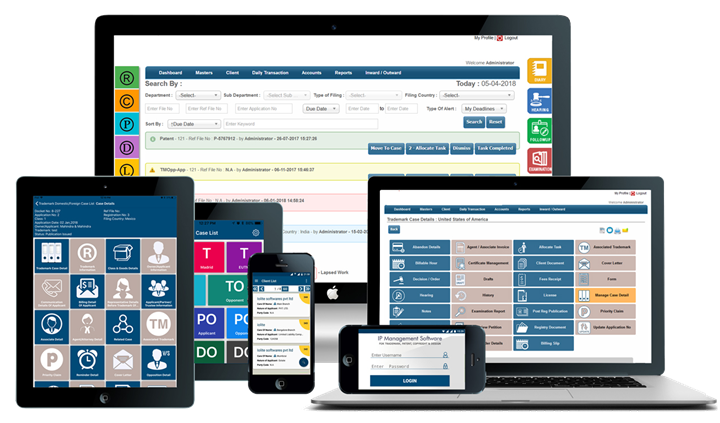Up until the recent years, businesses haven’t considered using cloud technologies for transferring and storing business-critical data.
This was changed with the adoption of hybrid digital infrastructures, which consist of a mix of on-premises and cloud-based systems.
This change further increases the complexity of data center management, as the infrastructure needs to be seamlessly controlled and mapped for the operations to keep running smoothly.
In this blog post we will examine the effects of cloud solutions on data center management.

DCIM software
A good data center infrastructure management (DCIM) solution would need to be able to manage not only the data center itself, but also the various hybrid digital infrastructures in all their complexity.
Future customer systems would also need to be supplied with detailed information from the data center, to ensure smooth running of all end-to-end processes.
In classic data center management, DCIM software has been used in on-premise systems.
However, in recent years the requirements for data center management are changing rapidly; cloud-based DCIM solutions are becoming increasingly popular to manage the extensive hybrid infrastructures in full extent.
According to Gartner’s research, this is one of the top ten trends in the field of IT infrastructure.
By using the Software as a Service (SaaS) operating model or DCIM-as-a-Service (DCIMaaS), companies are able to utilize all services related to the data center management more efficiently and with greater precision.
Compared to an on-premises solution, the SaaS model provides greater flexibility. It offers a better overview of the IT infrastructure and the communications-related devices and components, even reducing operating costs.
The market offers various software systems for improving data center processes.
The IT consulting and analyst firms, such as Gartner and 451 Research have introduced concepts and software solutions for data center management. 451 Research is using the term Data Center Service Optimization (DCSO).
These systems manage and optimize the existing virtual and physical resources in the data center, including the energy consumption and power supply analysis, and provide an overview of the actual costs of the data center services, enabling to create realistic cost- and price models.
Because DCIM and DCSO systems enable the seamless monitoring of data centers in real-time, the companies can plan and deploy their IT resources more efficiently.
The availability of power and consumption are monitored, as well as environmental conditions such as cooling and the status of infrastructure components and IT resources.
With the analysis of all relevant parameters, the capacities can be optimally provisioned. The processes relating to room layout, cooling, power supply, and the availability of equipment can be perfected and automated.
This will allow companies to benefit from energy-efficient and cost-saving data center operations.
DCIM systems therefore are closing the gap between IT systems and facility components, and allowing a possible full optimization of data center processes.
The Effect of Legacy IT Components
The traditional IT architectures usually consist of a mixture of brand new, state-of-the-art technologies and the legacy systems, with several in-house self-developed applications for managing the business-critical processes.
Both physical and virtualized components can be found in the architecture, and many companies choose to outsource parts of their IT resources to the cloud.
This results in a hybrid infrastructure, consisting of on-premise systems and cloud-based operating models.
Managing such infrastructures are very complex, non-transparent, and difficult to administer.
The important data is usually stored unstructured, available in various file formats, and is distributed all across the company to several different storage resources which also have different hierarchies.
This makes it very difficult to find, identify, and integrate the important information into a uniform data model.
Also, these differences can lead to inconsistent data sets and could present a difficult challenge for companies when they need to be compliant with regulations, especially the European Data Protection Regulation (DSGVO).
Companies are also constantly pressured to reduce the operating costs and increase the efficiency of IT processes.
Such heterogeneous IT infrastructures also affect the management of data centers.
In addition to the management of storage and the server and network resources, the underlying infrastructure for optimal room layout, the cooling and providing stable power supply are also very important.
Because of this complexity, administrators may not have a sufficient overview of the running processes in the data center, and it is hard to determine where cost savings can be made.
If the data center room layouts are not optimized, the cooling and exhaust air circuits of servers and storage systems may not provide sufficient cooling.
This can cause the IT hardware and resources to become inefficient and not perform at its maximum capacity (for example by applying thermal throttling, which reduces performance).
Adopting Cloud Solutions

The usage of cloud computing is growing rapidly around the world.
According to a 2019 study by Gartner, the enterprise spending on cloud-based solutions will outweigh the spending on non-cloud IT solutions by 2022. The Platform as a Service (PaaS) technologies — which is a broad collection of application infrastructure services — will become the prevailing platform delivery model in the future.
It is forecasted by Gartner that spending on cloud system infrastructure services will grow to $63 billion by 2021.
While the PaaS capabilities can support the role of a cloud platform, all cloud services including Software as a Service (SaaS) and Infrastructure as a Service (IaaS) can play critical roles for a platform, according to Gartner.
This means that as part of every cloud strategy, the searching and recognizing of opportunities for platform-based innovation across the entire spectrum of cloud services need to be considered, including the data center infrastructure management.
SaaS Model Advantages
The possible advantages of the SaaS model, in comparison to in-house operations, are obvious – the companies can flexibly and precisely use the whole range of functions and capacities for the data center management which they actually need.
This also means that the chosen services can be adapted to the customer’s specific requirements.
For example, additional services and functions can be added to or removed as required to the system, and the high costs for purchasing and managing software licenses are eliminated.
Instead, the customer will pay a monthly fee that includes all the necessary updates, upgrades and clearly defined services including the cost of licenses.
Companies will benefit from maximum cost transparency and a high degree of financial planning security, thanks to a contractually defined usage period and the demand-oriented billing of the cloud services used.
Another advantage of cloud solutions is that the company’s IT team would no longer have to take care of the infrastructure’s operation, the managing of the updates for the applications – these tasks will be done by the cloud SaaS provider’s professional team. Therefore, internal employees and administrators can concentrate more on their core tasks.
Full Overview of the Data Center Processes

The management of a data center’s resources not only includes the IT equipment such as servers, storage and network technologies, but also the infrastructure components for cooling and power supply, ensuring efficient control of the entire architecture and mapping of processes.
Implementing DCIMaaS solutions can take data center processes to a new level.
This is achieved by gaining a full overview of all the IT and communications-related devices and components through documentation.
Generating proper documentation enables all data center processes to be efficiently planned, managed, and finally automated.
A DCIMaaS solution can also provide capacity management, which will help to optimize floor space, cooling and power within the data center and make recommendations for optimal use of the existing resources.
This will enable companies to manage their technical and spatial capacities in the data center more efficiently.
As a result, the right resources will be always available at the right time for all types of infrastructures.
Lastly, the connectivity management will ensure that all network connections within the data center are properly planned and managed.
This also includes the cable infrastructure, signal tracking and auto-routing capabilities to route the new connections and ensure seamless end-to-end connectivity.
Conclusion
In the modern digital age, data centers must be managed as a whole with a full overview of all processes.
Modern DCIM systems can help to close the gap between the IT systems, and the underlying infrastructure components such as cooling and power supply.
By taking advantage of cloud solutions and the SaaS operating model, companies can use all services related to data center management more efficiently and with greater precision, further increasing efficiency.





